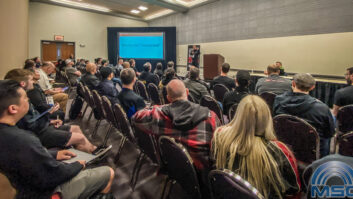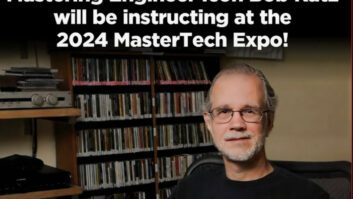The four-year-old inter-industry effort to develop an installation-training curriculum is making inroads with private and public technical schools and colleges.
In 2001, more than 1,000 students were in enrolled in Electronic Systems Technician (EST) training programs developed by the Consortium for Electronic Systems Technician Training (CESTT). The number grew to 2,254 between January and September 2002, according to Prentice Hall, which publishes and distributes course materials. The EST curriculum, said CESTT managing director Joe Jones, became the “fastest-selling curriculum in Prentice Hall’s arsenal of construction trade programs.”
CESTT was founded in February 1998 by 11 trade associations to expand the pool of trained entry-level installers available to employers in multiple installation industries, including the commercial and residential A/V, security, lighting and communications industries. The founders include the Consumer Electronics Association (CEA), the Custom Electronics Design and Installation Association (CEDIA), the Security Industry Association (SIA) and National Systems Contractors Association (NSCA).
By the end of 2000, the group had developed a curriculum that was adopted by two schools, but multiple schools now offer the program, which requires permanent training facilities because of the hours involved.
Although Prentice-Hall hasn’t released the name of the schools that have purchased EST course materials, CESTT has identified five of what it believes are many more schools offering all or part of the curriculum (see list below). The schools include the Lincoln Technical Institute, a private business- and vocational-training company that operates 23 schools in 11 states. In the fall of 2001, Lincoln inaugurated the program in its Melrose Park, Ill., campus and is rolling it out to more.
Two Lincoln schools in New Jersey will start the program later this year or early next, and the Columbia, Md., school will launch it in the spring. Two more schools will adopt the curriculum late next year or early in 2004, said Larry Hansen, an education supervisor at Lincoln’s Melrose facility.
CESST has also identified several Job Corps training centers that have adopted the curriculum, as well as select chapters of a trade group, the Associated Builders and Contractors. Each of ABC’s 80 chapters offers training in about 20 construction-related crafts, Jones said.
Adoption began to take off last year, Jones said, when the third level of EST training was written.
To further accelerate adoption, CESTT hired Jones early this year as its first managing director. Formerly an education manager at a telecommunications trade association, he is now responsible for presenting the curriculum to schools, exhibiting at trade shows and representing the industry to prospective students.
The curriculum is also marketed through Prentice Hall’s sales reps, who call on community colleges and technical schools, and by the National Center for Construction Education & Research (NCCER). The center, a provider of technical and craft training curricula and services, wrote the CESTT curriculum based on input from a group of Subject Matter Experts (SMEs) appointed by the consortium and NCCER.
While promoting the adoption of its curriculum, the consortium continues to expand its curriculum. The current three levels require 450 hours of training, but a 165-hour fourth level is in development and should be completed in 2003, Jones said.
“If you take all four, you’d be a ‘super tech’ who could work across different disciplines in low-voltage fields, then follow up with manufacturer-specific training [for particular industries],” Jones said.
Each level could be included in two full-time community-college or vocational-school semesters, although Lincoln Tech compresses the three levels into an eight-month program.
EST Level 1 covers such topics as construction materials and methods, electrical theory, electrical safety and low-voltage cabling. The second level includes craft-related mathematics, power quality and grounding, voice and data systems, and computer applications.
EST’s third level includes cable selection, busses and networks, video systems, audio systems, and wireless signal transmission, among others. Level four would add project planning and documentation, fire alarms, security systems, nurse call systems, CCTV systems and systems integration, among other things.
All levels are targeted to individuals who design, integrate, install and provide field maintenance and service on products that transport voice, video, audio and data signals in a commercial or residential premises; control, capture and display the signals; or use signals to control mechanical and electrical equipment such as lighting.
In 2001, about 180,000 people were employed as installers in these fields.
Custom-home-specific training programs are run by CEDIA, Canadian company Media Dynamics (see TWICE, Oct. 28, p. 26) and the Training Department, which offers video-based and in-field training.













